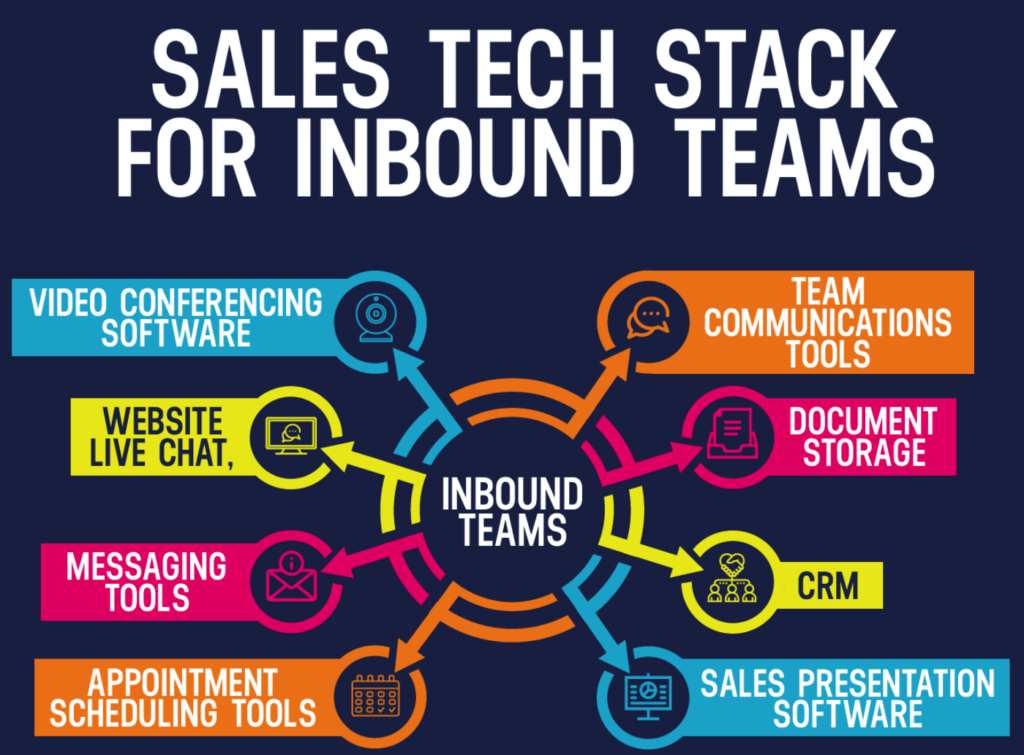A growing number of today’s sales companies have a mix of both in-house and remote salespeople. In fact, recent data from HubSpot found that 46% of sales companies now implement a hybrid model. While there will certainly be some overlap between onboarding remote salespeople and in-house salespeople, each demands its own unique strategies.
With that said, here’s how to handle each.
Onboarding Remote Salespeople
Convert Traditional Onboarding Materials into a Digital Format
The first order of business for sales leaders making the shift to remote onboarding is to take the traditional onboarding materials you’ve been using over the years and make them easily accessible for remote reps. This may sound obvious, but it’s one of the biggest stumbling blocks among sales trainers just getting their feet wet. After all, if there’s a major gulf between the materials your remote salespeople access and what your regular in-house reps access, it’s guaranteed to create friction. That’s why you want to ensure there’s complete homogeneity between the two.
So how exactly do you go about this?
I suggest taking inventory of essential onboarding materials, such as your employee handbook, company policies, company culture outline, and so on, and creating a digital packet that’s accessible through an online portal. This is a great starting point and will provide a cornerstone of online resources for all your remote reps to help them get their bearings.
Create a Series of Onboarding Videos
One of the biggest barriers to successfully onboarding remote salespeople is the lack of personal touch they don’t get like they would with face-to-face, in-person training. While it’s impossible to completely replicate the in-house experience, you can get pretty close by creating a series of onboarding videos. And when done correctly with iterations over time, this can help you create a consistent, repeatable process that adds the personal touch with minimal time expenditure.
Fortunately, this is easy to do with a platform like Bitable.
With it, you can create high-quality, professional videos using pre-made templates. Bitable lets you record training videos, screen-capture videos, and animated training videos with ease. That way, you can build a series of onboarding videos in sequential order that fluidly moves remote salespeople through the process step-by-step. And if they ever need to reference a particular topic, they can always go back and review it.
Build a Tech Stack
Needless to say, tech plays an integral role in a remote salesperson’s day-to-day activities. So right out of the gate, you’ll want to supply each rep with a comprehensive tech stack that can be accessed from a single digital location, such as an online portal. This may include communication tools like Slack and Microsoft Teams, project management tools like Trello and Asana, and CRM tools like HubSpot and Pipedrive.
Here’s a detailed example of what a tech stack may look like for inbound sales teams.
The key is to provide a standardized tech stack to create a uniform digital onboarding experience and also provide the requisite training on each to reduce the learning curve (something that can be done through online training videos as I just mentioned).
Onboarding In-house Salespeople
Use a Milestone-Based Process
One of the biggest advantages to onboarding in-house salespeople the “old school” way is that you’re heavily involved with their development and can keep close tabs on their progress. To streamline in-house onboarding and help new reps realize their full potential in the quickest amount of time, I suggest using a milestone-based process.
Here’s what top corporate sales training company The Brooks Group has to say about it.
“A formal, milestone-based onboarding process provides the framework to give reps everything they need to succeed within your sales organization within an appropriate time frame. A successful onboarding process:
- Sets time-based goals for content and skills mastery
- Establishes expectations for new rep participation in the process
- Guides both the representative and the manager through the process
- Includes clear checkpoints to measure progress”
While you’ll want to use a milestone-based process to a certain degree when onboarding remote salespeople as well, you’ll really want to emphasize it when onboarding in-house reps for the simple fact that it’s so easy to track everything firsthand. Also, it helps standardize the process to ensure everyone is on the same page and prevent disparities from hurting your overall sales system.
Give New In-house Reps a Mentor
In a previous post, I mentioned that it typically takes around nine months for a new rep to become competent to perform and 15 months to become a top performer.
But I also mentioned that a strong sales onboarding process can reduce this time by as much as half. One of the best ways to do that is to assign a mentor to each salesperson — someone who personally oversees their development and primes them for success.
Just like you want to use tech to your advantage to aid in onboarding remote salespeople, you’ll want to use the face-to-face nature of in-house onboarding to your advantage here. By assigning each new rep their own mentor who they can shadow, ask questions, and turn to for support, it naturally creates a framework that accelerates progress. Not to mention it helps create a more close-knit culture that benefits everyone.
For a detailed overview of sales mentorship and guidance on how to set up a formal program, I suggest reading this article from HubSpot.
Winning at Both Types of Salesperson Onboarding
With close to half of today’s sales companies having a mix of remote and in-house salespeople, it’s incredibly important to offer effective onboarding for both. Again, this largely boils down to capitalizing on the opportunities of each, and implementing the specific strategies mentioned above should help you do just that.
And if you’re looking to fill your talent pipeline with elite salespeople in your industry, check out HireDNA. It can help you find both sales candidates and sales leaders, with 92% of recommended candidates becoming top performers within one year.



